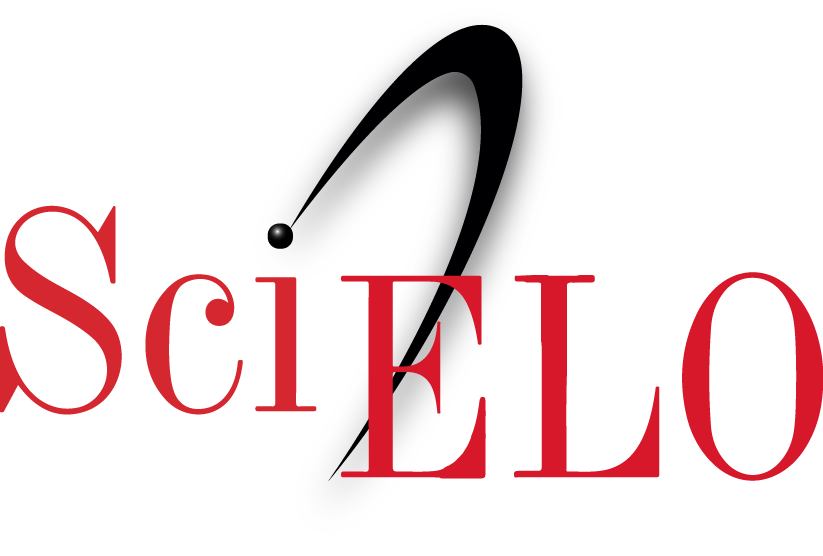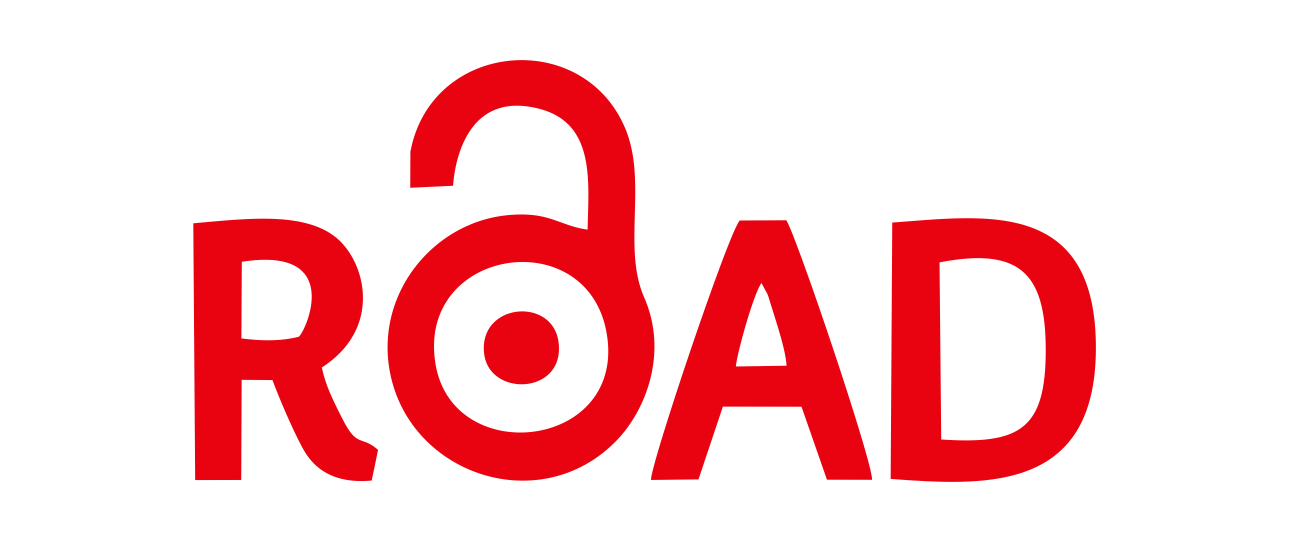Fair organizations: Is it possible to build them?
Keywords:
Organizational Justice; Job Satisfaction; Procedures; Communication; Layoffs.Abstract
The well-being of workers and the productivity of companies have been subjects of great interest in the scientific literature and in the daily life of organizations. Organizational justice is one of the factors that contributes to achieving these results.Theories that attempt to explain the effects of a perception of justice at work emphasize the relationship of reciprocity that must exist between the employee and the employer. The perception that the employer acts fairly gives rise to feelings of trust, commitment and loyalty to the employer, which has an impact on better job performance and positive attitudes in the workplace.Each of the procedures carried out in the work environment, such as the selection of personnel, performance evaluation, conflict resolution, distribution of rewards and layoffs, are at high risk of generating perceptions of injustice due to the parties involved, this is why they must be rethought in the light of the dimensions of organizational justice.The objective then is to know how the concept of justice can be applied in the most important procedures at the organizational level.References
Abas, N. A. H. b., Otto, K., & Ramayah, T. (2018). A Supporting Hand in Dealing with Interpersonal Conflicts: The Role of Interactional Justice. Asian Academy of Management Journal, 23, 79–99. doi:10.21315/aamj2018.23.1.4
Adams, J. S. (1965). Inequity in Social Exchange. New York: Academic.
Allen, T., Whittaker, W., & Sutton, M. (2017). Does the proportion of pay linked to performance affect the job satisfaction of general practitioners? Social Science & Medicine, 173, 9-17. doi: https://doi.org/10.1016/j.socscimed.2016.11.028
Andreeva, E., Brenner, M. H., Theorell, T., & Goldberg, M. (2017). Risk of psychological ill health and methods of organisational downsizing: A cross-sectional survey in four European countries. BMC Public Health, 17(1). doi:10.1186/s12889-017-4789-3
Andreeva, E., Magnusson Hanson, L. L., Westerlund, H., Theorell, T., & Brenner, M. H. (2015). Depressive symptoms as a cause and effect of job loss in men and women: Evidence in the context of organisational downsizing from the Swedish Longitudinal Occupational Survey of Health. BMC Public Health, 15(1). doi:10.1186/s12889-015-2377-y
Andrighetto, G., Brandts, J., Conte, R., Sabater-Mir, J., Solaz, H., Székely, Á., & Villatoro, D. (2016). Counter-Punishment, Communication, and Cooperation among Partners. Frontiers in behavioral neuroscience, 10, 53-53. doi:10.3389/fnbeh.2016.00053
Atwater, L., Waldman, D., Carey, J., & Cartier, P. (2001). Recipient and observer reactions to discipline: Are managers experiencing wishful thinking? Journal of Organizational Behavior, 22, 249-270. doi:10.1002/job.67
Babagana SA. (2019). Moderating Effect of Employee Participation on Factors that Determine Effective Performance Appraisal (EPA): Data Screening and Preliminary Analysis. International Journal of Academic Research Business and Social Sciences, 9(4), 116-134.
Ball, G. A., Trevino, L. K., & Sims, H. P. (1994). Just and unjust punishment: Influences on subordinate performance and citizenship. Academy of Management Journal, 37(2), 299-322. doi:10.2307/256831
Bies, R. J., & Moag, J. S. (1986). Interactional justice: Communication- criteria for fairness. In J. Press (Ed.), Research on Negotiation in Organizations (Vol. 1, pp. 43-55). Greenwich.
Blader, S. L., & Tyler, T. R. (2009). Testing and extending the group engagement model: linkages between social identity, procedural justice, economic outcomes, and extrarole behavior. J Appl Psychol, 94(2), 445-464. doi:10.1037/a0013935
Booij, L. H. (2007). Conflicts in the operating theatre. Curr Opin Anaesthesiol, 20(2), 152-156. doi:10.1097/ACO.0b013e32809f9506
Cameron, K. S., & Freeman, S. (1996). Downsizing and redesigning organizations. In O. U. Press (Ed.), Organizational Change and Redesign: Ideas and Insights for Improving Performance (pp. 19-65). New York: Oxford University Press.
Cortini, M., Galanti, T., & Barattucci, M. (2019). The Effect of Different Rejection Letters on Applicants’ Reactions. Behavioral Sciences, 9(10), 102.
Cropanzano R & Folger R. (1991). Procedural justice and worker motivation. In R. M. S. L. W. Porter (Ed.), Motivation and Work behavior (Vol. 5, pp. 131-143). New York: McGraw-Hill.
Cropanzano, R., & Ambrose, M. (2001). Procedural and distributive justice are more similar than you think: A monistic perspective and a research agenda Advances in Organizational Justice (pp. 119-151). Stanford.
Cropanzano, R., Bowen, D. E., & Gilliland, S. W. (2007). The management of organizational justice. The Academy of Management Perspectives, 21(4), 34-48. doi:10.5465/AMP.2007.27895338
Cropanzano, R., & Mitchell, M. S. (2005). Social Exchange Theory: An Interdisciplinary Review. Journal of Management, 31(6), 874-900. doi:10.1177/0149206305279602
Charness, G., & Levine, D. I. (2000). When are Layoffs Acceptable? Evidence from a Quasi-Experiment. ILR Review, 53(3), 381-400. doi:10.1177/001979390005300302
de Jong, T., Wiezer, N., de Weerd, M., Nielsen, K., Mattila-Holappa, P., & Mockałło, Z. (2016). The impact of restructuring on employee well-being: a systematic review of longitudinal studies. Work and Stress, 30(1), 91-114. doi:10.1080/02678373.2015.1136710
Denise Francis, L. (2019). Organizational justice, sensitivity to injustice and the experience of stress. Dissertation Abstracts International: Section B: The Sciences and Engineering, 64(1B), 451.
DeNisi, A. S., & Murphy, K. R. (2017). Performance appraisal and performance management: 100 years of progress? J Appl Psychol, 102(3), 421-433. doi:10.1037/apl0000085
Dishon-Berkovits, M. (2017). The Role of Organizational Justice and Stress in Predicting Job Burnout. Journal of Career Development, 45(5), 411-424. doi:10.1177/0894845317705469
Dusterhoff, C., Cunningham, J., & Macgregor, J. (2014). The Effects of Performance Rating, Leader–Member Exchange, Perceived Utility, and Organizational Justice on Performance Appraisal Satisfaction: Applying a Moral Judgment Perspective. Journal of Business Ethics, 119. doi:10.1007/s10551-013-1634-1
Dutton J. (2017). Positive Organizational Justice From Fair to Fairer—and Beyond Exploring Positive Relationships at Work Building a Theoretical and Research Foundation. New York: Lawrence Erlbaum Associates.
Fischer, R. (2008). Chapter 8: Organizational Justice and Reward Allocation (pp. 135).
Folger, R., & Greenberg, J. (1985). Procedural justice: An interpretive analysis of personnel systems. Greenwich: JAI Press.
Gangloff, B., Mayoral, L., Personnaz, B., & Rezazi, A. (2016). ¿Los Asesores de los Managers Son Conscientes de los Factores Determinantes en sus Sugerencias Sobre Distribución de Primas?: Un Estudio Sobre Justicia Distributiva. Psykhe (Santiago), 25, 1-13.
Giannantonio Cristina, M. (2019). Effects of recruiter friendliness and job attribute information on recruitment outcomes. Personnel Review, 48(6), 1491-1506. doi:10.1108/PR-01-2018-0037
Goergen, C., Pauli, J., Cerutti, P., & Perin, M. (2018). The organizations. Justice, trust and retaliatory attitude: a study in a company the metal-mechanic sector. Cuadernos de Administración (Universidad del Valle), 34, 33-49.
Goldman, B. M. (2003). The Application of Referent Cognitions Theory to Legal-Claiming by Terminated Workers: The Role of Organizational Justice and Anger. Journal of Management, 29(5), 705-728. doi:10.1016/S0149-2063_03_00032-1
Greenberg. (1990). Organizational justice: Yesterday, today, and tomorrow. Journal of Management, 16(2), 399-432. doi:10.1177/014920639001600208
Greenberg. (1993). The social side of fairness: Interpersonal and informational classes of organizational justice. In R. Cropanzano (Ed.), Justice in the Workplace: Approaching Fairness in Human Resource Management In: (pp. 79-103). Hillsdale.
Greer, L. L., Saygi, O., Aaldering, H., & de Dreu, C. K. (2012). Conflict in medical teams: opportunity or danger? Med Educ, 46(10), 935-942. doi:10.1111/j.1365-2923.2012.04321.x
Herr, R. M., Loerbroks, A., Bosch, J. A., Seegel, M., Schneider, M., & Schmidt, B. (2016). Associations of Organizational Justice with Tinnitus and the Mediating Role of Depressive Symptoms and Burnout-Findings from a Cross-Sectional Study. Int J Behav Med, 23(2), 190-197.
Ibeogu, P. H., & Ozturen, A. (2015). Perception of Justice in Performance Appraisal and Effect on Satisfaction: Empirical Findings from Northern Cyprus Banks. Procedia Economics and Finance, 23, 964-969. doi:https://doi.org/10.1016/S2212-5671(15)00359-7
Janss, R., Rispens, S., Segers, M., & Jehn, K. A. (2012). What is happening under the surface? Power, conflict and the performance of medical teams. Medical Education, 46(9), 838-849. doi:10.1111/j.1365-2923.2012.04322.x
Karl, A., & Hancock, B. (1999). Expert Advice on Employment Termination Practices: How Expert Is it? . Public Personnel Managendem, 28(1), 51-62.
Khiavi, F. F., Shakhi, K., Dehghani, R., & Zahiri, M. (2016). The correlation between organizational justice and trust among employees of rehabilitation clinics in hospitals of Ahvaz, Iran. Electron Physician, 8(2), 1904-1910. doi:10.19082/1904
Konradt, U., Garbers, Y., Weber, M., Erdogan, B., & Bauer, T. (2015). Antecedents and Consequences of Procedural Fairness Perceptions in Personnel Selection: A Three-Year Longitudinal Study. Group and Organization Management, in press. doi:10.1177/1059601115617665
Lakshman, C. (2019). Consequences of paying CEOs for Downsizing: A Four-Country Study of the Impacts on Survivors vs. Victims. M@n@gement, 22(2), 250-272. doi:10.3917/mana.222.0250
Laundon, M., Cathcart, A., & McDonald, P. (2019). Just benefits? Employee benefits and organisational justice. Employee Relations. doi:10.1108/ER-11-2017-0285
Leventhal, Karuza, & Fry. (1980). Beyond Fairness A Theory of Allocation Preferences. Justice and Social Interaction Justice and Social Interaction (Vol. 3, pp. 167-218). New York: Springer-Verlag.
Loerbroks, A., Meng, H., Chen, M.-L., Herr, R., Angerer, P., & Li, J. (2014). Primary school teachers in China: associations of organizational justice and effort-reward imbalance with burnout and intentions to leave the profession in a cross-sectional sample. Int Arch Occup Environ Health, 87(7), 695-703.
Long, C. P. (2016). Mapping the Main Roads to Fairness: Examining the Managerial Context of Fairness Promotion. Journal of Business Ethics, 137(4), 757-783. doi:10.1007/s10551-015-2749-3
Lu, T., & McKeown, S. (2018). The effects of empathy, perceived injustice and group identity on altruistic preferences: Towards compensation or punishment. Journal of Applied Social Psychology, 48(12), 683-691. doi:10.1111/jasp.12558
McCarthy, J., Bauer, T., Truxillo, D., Anderson, N., Costa, A. C., & Ahmed, S. (2017). Applicant Perspectives During Selection A Review Addressing “So What?,” “What’s New?,” and “Where to Next?”. Journal of Management, 43, 1-33. doi:10.1177/0149206316681846
Meinecke, A. L., Lehmann-Willenbrock, N., & Kauffeld, S. (2017). What happens during annual appraisal interviews? How leader-follower interactions unfold and impact interview outcomes. J Appl Psychol, 102(7), 1054-1074. doi:10.1037/apl0000219
Melchers, K. G., & Körner, B. (2019). Is It Possible to Improve Test Takers’ Perceptions of Ability Tests by Providing an Explanation? Journal of Personnel Psychology, 18(1), 1-9. doi:10.1027/1866-5888/a000212
Mooijman, M., & Graham, J. (2018). Unjust punishment in organizations. Research in Organizational Behavior, 38, 95-106. doi:https://doi.org/10.1016/j.riob.2018.10.001
Mulders, J. O. (2019). Employers’ age-related norms, stereotypes, and ageist preferences in employment. Innovation in Aging, 3(Suppl 1), S570-S570. doi:10.1093/geroni/igz038.2109
Nikolaou, I., & Georgiou, K. (2018). Fairness reactions to the employment interview. Revista de Psicología del Trabajo y de las Organizaciones, 34, 103-111.
Paterson, J. M., & Härtel, C. E. J. (2016). An integrated affective and cognitive model to explain employees’ responses to downsizing Managing Emotions in the Workplace (pp. 25-44).
Pfeffer, J., & Langton, N. (1993). The effect of wage dispersion on satisfaction, productivity, and working collaboratively: Evidence from college and university faculty. Administrative Science Quarterly, 38(3), 382-407. doi:10.2307/2393373
Rubin, E. V., & Edwards, A. (2018). The performance of performance appraisal systems: understanding the linkage between appraisal structure and appraisal discrimination complaints. The International Journal of Human Resource Management, 1-20. doi:10.1080/09585192.2018.1424015
Sahoo, R. (2019). Organizational justice, conflict management and employee relations: The mediating role of climate of trust. International Journal of Manpower, 40(4), 783-799. doi:10.1108/IJM-12-2017-0342
Saxton, R. (2012). Communication skills training to address disruptive physician behavior. Aorn j, 95(5), 602-611. doi:10.1016/j.aorn.2011.06.011
Schulte-Braucks, J., Baethge, A., Dormann, C., & Vahle-Hinz, T. (2019). Get even and feel good? Moderating effects of justice sensitivity and counterproductive work behavior on the relationship between illegitimate tasks and self-esteem. Journal of Occupational Health Psychology, 24(2), 241-255. doi:10.1037/ocp0000112
Silva, M. R., & Caetano, A. (2016). Organizational Justice Across Cultures: A Systematic Review of Four Decades of Research and Some Directions for the Future. Social Justice Research, 29(3), 257-287. doi:10.1007/s11211-016-0263-0
Snorradóttir, Á., Tómasson, K., Vilhjálmsson, R., & Rafnsdóttir, G. L. (2015). The health and well-being of bankers following downsizing: A comparison of stayers and leavers. Work, Employment and Society, 29(5), 738-756. doi:10.1177/0950017014563106
Thomas, K., & Kilmann, R. (1976). Thomas-Kilmann conflict MODE instrument. doi:10.1037/t02326-000
Trevino, L. K. (1992). The social effects of punishment in organizations: A justice perspective. The Academy of Management Review, 17(4), 647-676. doi:10.2307/258803
Truxillo, D. M., Bauer, T. N., & Garcia, A. M. (2017). Applicant Reactions to Hiring Procedures The Wiley Blackwell Handbook of the Psychology of Recruitment, Selection and Employee Retention (pp. 53-70).
Tyler, T. R., & Blader, S. L. (2000). Cooperation in groups: Procedural justice, social identity and behavioral engagement (Vol. 45). Philadelphia: Psychology Press.
Tziner, A., & Levy, S. (2017). Examination of Performance Appraisal Behavior Structure. Frontiers in psychology, 7, 2075-2075. doi:10.3389/fpsyg.2016.02075
Umiker W. (2005). Management Skills for the New Health Care Supervisor (Vol. 3). Canada.
Vaamonde, J. D., Omar, A., & Salessi, S. (2018). From Organizational Justice Perceptions to Turnover Intentions: The Mediating Effects of Burnout and Job Satisfaction. Europe's journal of psychology, 14(3), 554-570. doi:10.5964/ejop.v14i3.1490
van den Bos, K., & Lind, E. A. (2002). Uncertainty management by means of fairness judgments Advances in experimental social psychology, Vol. 34. (pp. 1-60). San Diego, CA, US: Academic Press.
van Prooijen JW. (2015). The punitive power holder: Social judgeability increases the severity of punishment. In IAP Information Age Publishing (Ed.), Research in Social Issues in Management. The social dynamics of organizational justice (pp. 121-140).
Wan, Q., Zhou, W., Li, Z., & Shang, S. (2018). Associations of Organizational Justice and Job Characteristics with Work Engagement Among Nurses in Hospitals in China. Research in nursing & health, 41(6), 555-562. doi:10.1002/nur.21908
Zwank, J., & Diehl, M.-R. (2019). Fairness as a disguise: Fear-driven motives for justice enactment during organizational change. Academy of Management Proceedings, 2019(1), 16755. doi:10.5465/AMBPP.2019.245
Published
How to Cite
Issue
Section
License
Copyright (c) 2020 Elsa Maria Vasquez-Trespalacios
The works published in this magazine are under the Creative Commons Attribution-NonCommercial 2.5 Argentina license.
Important: The author is the owner of the rights to exploit the contents of the article of his authorship.
You are free to:
Share — copy and redistribute the material in any medium or format.
Adapt — remix, transform and build from the material.
The licensor cannot revoke these liberties as long as you follow the terms of the license.
Under the following terms:
Attribution - You must give appropriate credit, provide a link to the license, and indicate if any changes have been made. You may do so in any reasonable way, but not in a way that suggests that you or your use is endorsed by the licensor.
Non-Commercial - You may not use the material for commercial purposes.
There are no additional restrictions - You cannot apply legal terms or technological measures that legally restrict others to make any use permitted by the license.




















